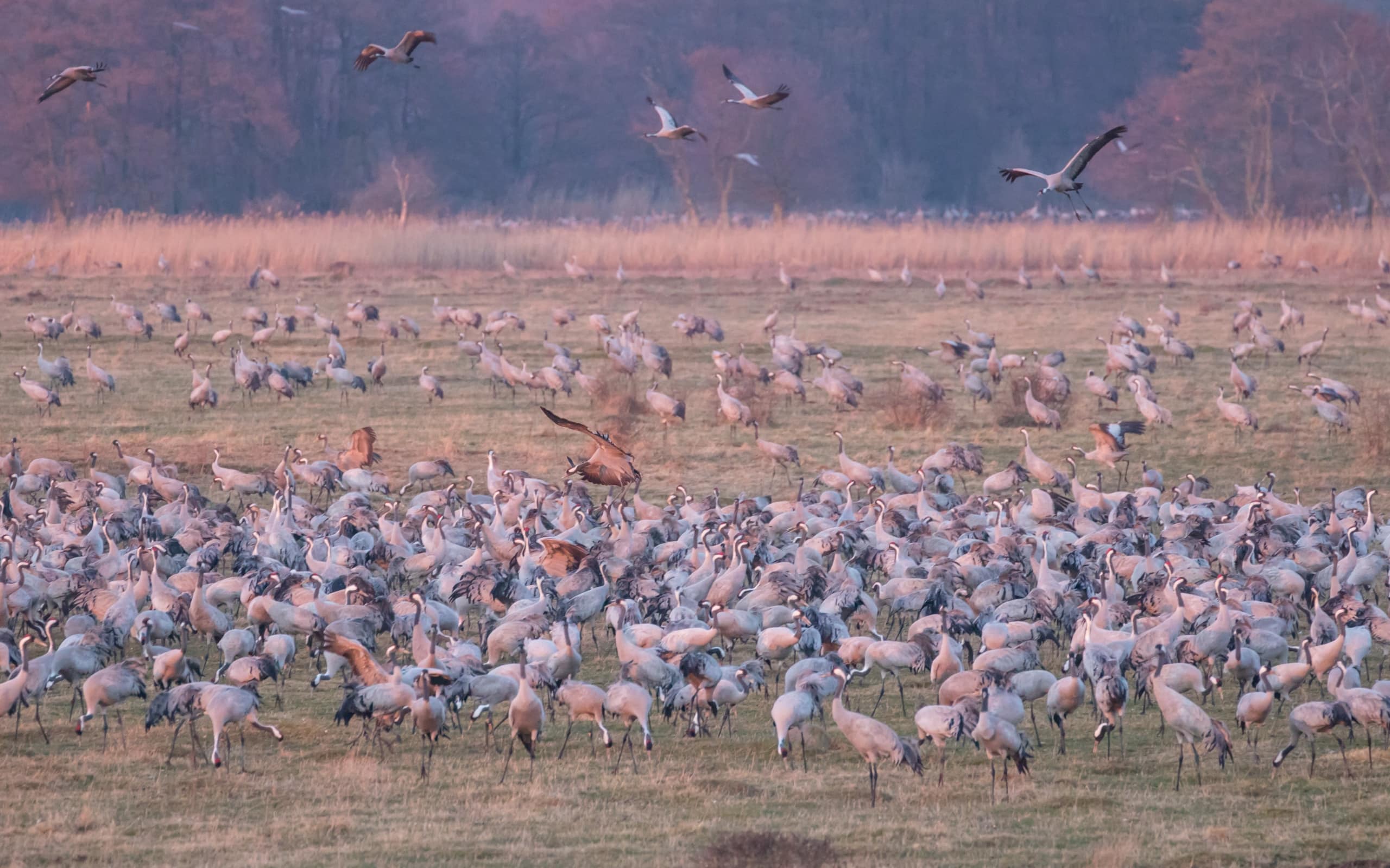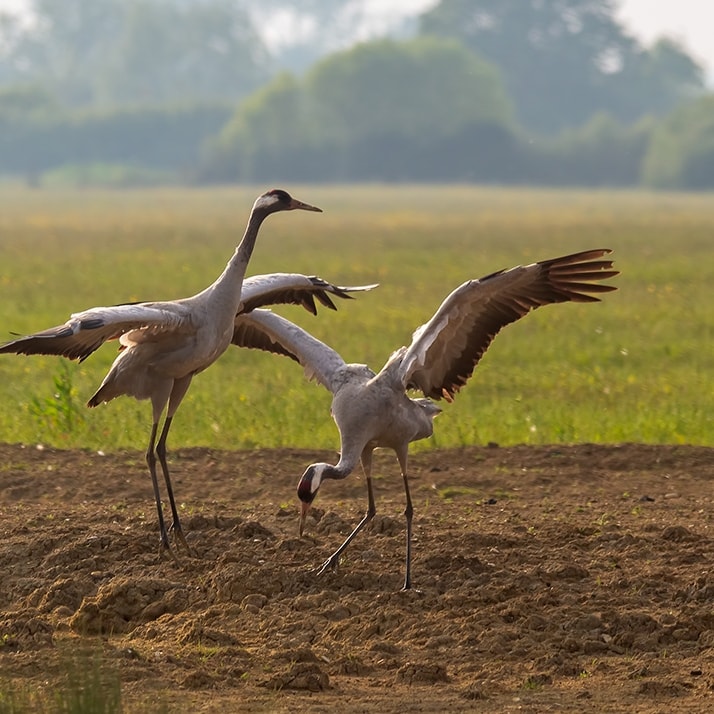This article is brought to you by Datawrapper, a data visualization tool for creating charts, maps, and tables. Learn more.
The dancing cranes of Lake Hornborga

Hi, this is Anna. At Datawrapper, I’m responsible for the maps you can find in our choropleth and symbol map editor. Today is Earth Day, so I’m going to take a closer look at the cranes migrating across the globe.
There is a Swedish lake called Hornborga where migrating cranes gather to rest on their way from their winter grounds in the south to their summer grounds in the far north. But not only the cranes are gathering. A lot of people come to watch the cranes. For us Swedish people, it’s one of the many signs of the arrival of spring, and the first crane is always reported in the national news. When I was little, we went each year with the school to watch thousands of these 1.3 meters tall birds.
When you visit lake Hornborga while the cranes are there, the first thing you’ll notice is the noise. To get an impression of how it looks like, watch this video! The birds’ trumpeting is almost ear-splitting. But it’s worth it: Once in a while, a crane couple performs their mating dance by jumping up in the air, stretching their legs and flapping their wings. It really looks like they are dancing.

The cranes spend the winter in north Africa, Spain, or Germany. When the days are getting longer, thousands of cranes at once start migrating back to the north. High air pressure and good back wind are optimal conditions for a successful flight.
The cranes fly up to 450 km per day during the day and gather to rest over the night – or for a couple of days at certain stopover sites. Birds traveling long distances don’t take temperature into account when deciding when to stop flying to the north. But they might stay longer at certain stopovers and arrive a few days later if the temperatures are colder.
At the beginning of March, the first cranes show up at the lake. The number of cranes usually peaks at the beginning of April, when around 20,000 birds gather at the lake. Volunteers count the cranes every evening and report the numbers to the administrative board of Västra Götaland. On April 3rd, 2019, the volunteers counted 27,300 cranes – the record so far.
By the end of April, all cranes will have left Lake Hornborga. From there, individual crane couples scatter over the northern parts of Sweden to breed.
But the cranes will be back. They make a less spectacular stop at Lake Hornborga again on their way to the winter grounds in September/October, eager to hurry down to the warmer climate around the Mediterranean Sea.
That’s it from me this time! If you have feedback or questions, leave it in the comments below. Next week, our PDF export developer Jakub will take care of the Weekly Chart – we’ll see you then!




Comments